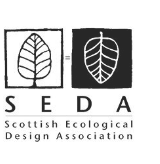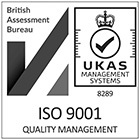Pragmatic
sustainability –
a common sense
approach

Principles
Much is spoken of sustainability often with conflicting viewpoints and sometimes spurious agendas. Our approach starts with the site and the client and focuses on pragmatism. We start by asking the question, what is realistically achievable on this site with the resources available?
Where possible we aim to exceed the minimum standards expected by legislation, but also take into consideration the clients objectives and personal commitment to sustainable design. We seek to establish at an early stage of design what might be achievable, discuss this with our clients, and set out agreed objectives. It is imperative that sustainability is at the core of the design rather than viewed as a ‘bolt-on’.
Matters to consider include the site itself; the viability of any existing buildings; the purpose and likely lifespan of the building; materiality; embodied energy; energy efficiency; running costs; maintenance and end of life issues. From this analysis, we offer options and make recommendations to our clients.
The site can direct and dictate the approach to sustainable design. Factors such as exposure, orientation, flood risk all have abearing upon the design. Early site analysis and survey work is essential. Survey work may include, habitat surveys and desktop studies into the site history, contamination risk and environmental impacts.
Energy efficiency is extremely important at the early design stage. Key decisions about the targets for reducing heat loss and options for heating should be considered and specialist advice from services engineers should be sought to get the best solution to suit the site and the client’s needs.
Every material used in construction came from somewhere and involved energy usage, environmental impact and transportation. The compound effect of these can be detrimental to the environment. We aim to select materials that have a low impact on our environment, both at the extraction and manufacturing stage, the road miles included in getting the materials to the site and also their end use. Can the materials be recycled? How often do they need to be maintained? What is involved in the maintenance and end of life disposal? Answers to these questions influence the design decisions we make.
A building and its immediate setting can have a positive effect on the occupants, users and those nearby. Good design can contribute significantly to this process. This includes good use of light, air quality, avoiding noise pollution and thermal comfort. In addition, Volatile Organic Compounds (VOC’s) embodied in various materials can have a negative effect on people. We therefore try to avoid these where possible in the designs.
Memberships
& Accreditations









